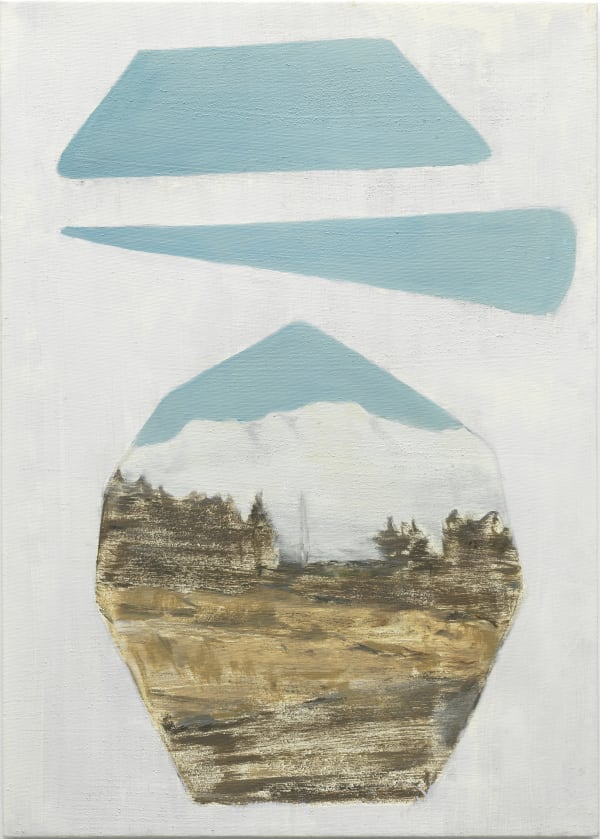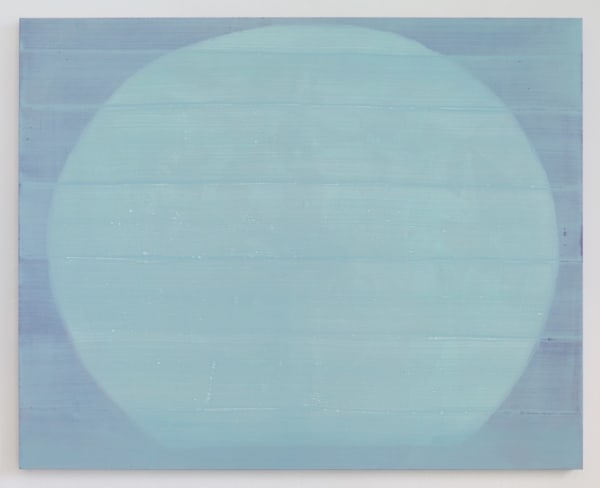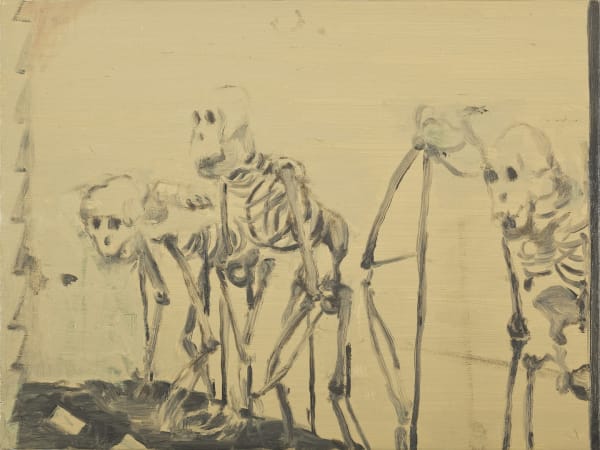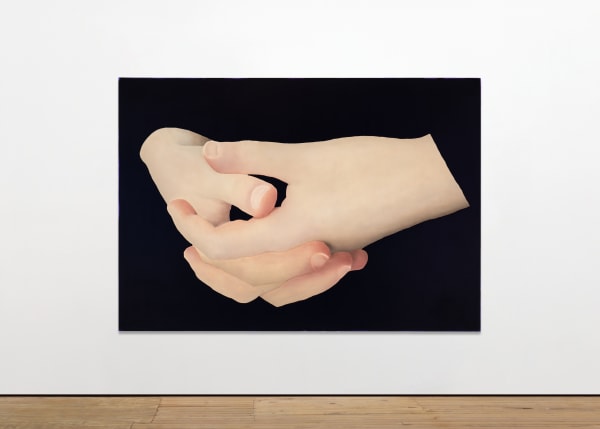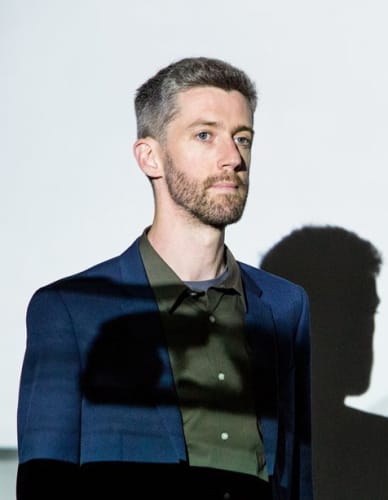Ciarán Murphy’s paintings engage with the entanglement of technological and analogue modes of image-making. Negotiating an infinity of found images, Murphy splices together various source materials, allowing for chance encounters and incongruity to coalesce and collapse seemingly distinct subject matter into resolved compositions. In doing so, he examines and disrupts the dichotomy between original and copy, in favour of painting a blend or ‘mutation,’ asserting the painted medium’s capacity for verisimilitude; its ability to more accurately capture an atmosphere or sensation through approximation rather than direct mechanical reproduction.
Beginning each painting through a process of cutting and collaging different symbols and motifs across the canvas, Murphy allows competing foregrounds and backgrounds to merge unexpectedly. In this way, each painting is realised through the union of visual elements that might be jarring and harmonious in equal measure. Once a desired subject reveals itself, Murphy sets about rendering it in oils, often utilising a range of techniques, from areas of impasto and passages of scumbling, to the scraping and sweeping of paint from the surface, dissolving the absolute clarity of the subject and allowing the image to fade away from easy perception. Murphy’s paintings therefore engage with the phenomenology of sight itself, asking what the human eye can distinguish that a camera lens or computer screen, for instance, might not.
Elusion is not just part of the technique and substance of the painting, but becomes its subject matter too. His paintings are sometimes in series and pairs but also as isolated occurrences, that explore presence and absence; of people, animals, objects and places. Acts of looking or being observed feature prominently, across a suite of paintings depicting an individual figure shielding their eyes, and also a cropped close-up view of hands clasping a pair of binoculars. Murphy is often showing the viewer one thing, whilst obscuring another referent contained outside the boundaries of the canvas, there is an elusive pursuit both for the subject and the viewer, a feeling of suspense.
This allusion to something that is missing, concealed or yet to appear finds a further visual metaphor in a painting of a mound of small letters held within outstretched palms of an unknown figure. It is a painting that internalises this theme of visual equivocation, referencing the equivalent ability of the written and spoken language, like the language of images, to disguise or misdirect the truth. Within a pile of fragmented letters are endless possibilities of meaning that refuse to be unearthed.
Ciarán Murphy (b. 1978 in Mayo, IE) received his BA at the National College of Art & Design, Dublin (IE) in 2003 and his MA in Visual Arts Practices (MAVIS), IADT, Dublin (IE) in 2005. Solo exhibitions include: this appear, GRIMM, London (UK); Solid Gone, GRIMM, Amsterdam (NL); Merrily, merrily, merrily, merrily, Butler Gallery, Kilkenny (IE); The Model, Sligo and Royal Hibernian Academy, Dublin (IE); there, there now, GRIMM, Amsterdam (NL); Hundreds of Nature, GRIMM, New York, NY (US); Plainsight, GRIMM, Amsterdam (NL); A Round Now, Taymour Grahne Gallery, New York, NY (US); The Paradise, Douglas Hyde Gallery, Dublin (IE); All That’s Air Melts Into Solid, GRIMM, Amsterdam (NL); Ciarán Murphy, Douglas Hyde Gallery, Dublin (IE); March, Mother’s Tankstation, Dublin (IE); Ciarán Murphy, Cerealart, Philadelphia, PA (US); and Ciarán Murphy, Kavi Gupta Gallery, Chicago, IL (US).
Selected collections include AzkoNobel Art Foundation, Amsterdam (NL); the Arts Council of Ireland, Dublin (IE); The David and Indrė Roberts Collection, London (UK); Defares Collection, Amsterdam (NL); Irish Museum of Modern Art (IMMA), Dublin (IE); MOVE, Amsterdam (NL); Museum Voorlinden, Wassenaar (NL) and Sanders Collection, Haarlem (NL) among others.


